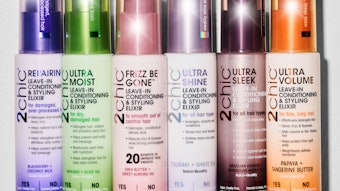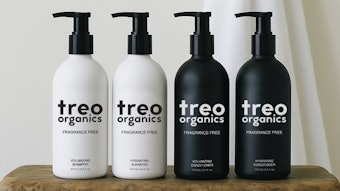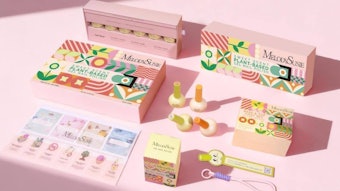
If there’s anything this decade has shown us this far in the hair industry, it’s that clean and sustainable beauty isn’t a fleeting trend – it’s a lifestyle that both pros and their clients are adopting to better care for their hair, skin and overall wellness. While there’s many options to be more environmentally friendly that don’t require a significant commitment, as a business, you may want to invest in tools like energy-efficient appliances or a salon recycling program. These resources can often be costly, which is why many salons are adopting a “green fee” to help pay for these services. Deciding which options are best to adopt for your business, then communicating those changes to clients can be overwhelming if you don’t know where to start. To help, three sustainability experts share their advice and insights, so you can commit to being a sustainable salon this Earth month.
Committing to Being a Sustainable Salon
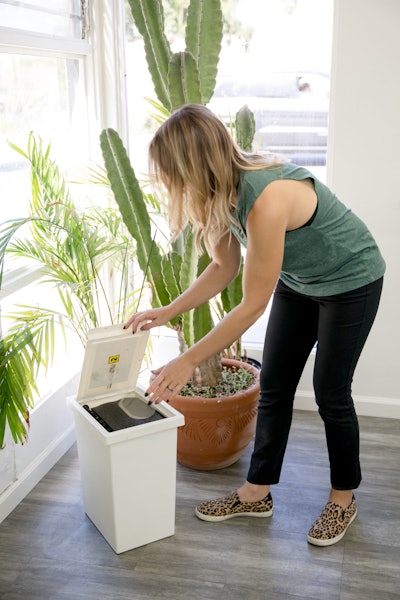 Transitioning to a sustainable salon doesn’t have to require drastic changes or major commitment. There’s small steps you can take to move your business in the right direction.Courtesy of Sustain Beauty Co
Transitioning to a sustainable salon doesn’t have to require drastic changes or major commitment. There’s small steps you can take to move your business in the right direction.Courtesy of Sustain Beauty Co
Valorie Tate, Founder of Sustain Beauty Co, suggests starting with eliminating plastic water bottles and plastic in your retail bags. For those ready to make a more significant impact, implementing color management technology or water-saving appliances can take the business to the next level.
“We encourage stylists and owners to start with something personally important to you to make it feel good to your soul when you crush your goals,” Tate says.
Daniel Johnson, Founder of The Green Beauty Community Foundation, emphasizes that the shift involves a comprehensive commitment to environmental, social and economic sustainability. It requires evaluating existing practices, adopting eco-friendly products, minimizing waste, conserving resources and educating staff and clients about sustainability.
Shane Price, Founder and CEO of Green Circle Salons, echoes this sentiment, saying that making the shift to becoming a sustainable salon requires intentional change. He notes that you don’t have to go through the process alone. Many clients want to be a part of their salon’s journey to be more environmentally friendly.
“Believe it or not, 87% of Americans want to support brands that, at the very least, recycle. That’s almost 9 out of 10 people,” Price shares.
Making Sustainability Affordable
Despite the appeal of eco-friendly upgrades, many beauty professionals worry about the cost of implementing sustainable practices. The good news is that transitioning to sustainability can be done affordably.
“The idea that you can only be sustainable if you invest in a complete rebuild of your location is outdated,” Tate says. “My advice to anyone considering it is to transition incrementally and to focus on changes that free up cash for you to then continue to reinvest.”
Price recommends prioritizing small, manageable shifts that are lower in cost, such as switching to energy efficient lighting or recycling or eliminating disposable plastics. You can also reduce waste and single-use items available in the salon, opting for hand towels over paper towels in salon bathrooms, for example. He also suggests investing in key energy-efficient equipment like LED lighting, low-flow faucets and energy efficient hairdryers or steamers.
“These are often high-return, low investment changes that lower utility bills and reduce long term operating costs,” he says. 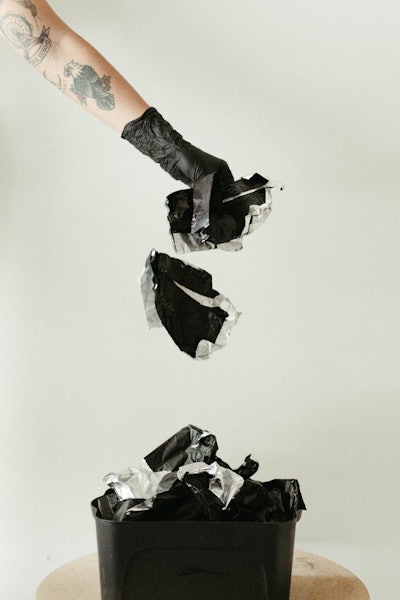 Despite the appeal of eco-friendly upgrades, many beauty professionals worry about the cost of implementing sustainable practices. The good news is that transitioning to sustainability can be done affordably.Courtesy of Vibe Hair Company
Despite the appeal of eco-friendly upgrades, many beauty professionals worry about the cost of implementing sustainable practices. The good news is that transitioning to sustainability can be done affordably.Courtesy of Vibe Hair Company
Price also emphasizes the importance of community when it comes to being sustainable. You can join sustainable-focused networks, partner with organizations that make sustainability cost-effective, train employees in sustainable practices, host sustainability-focused events for your salon community and partner with other salons or local businesses to bulk-purchase sustainable supplies at a lower cost.
For salons that need extra support, Johnson shares that salon owners can apply for government grants or rebates for energy efficiency and renewable energy adoption.
Low-Cost Sustainable Beauty Practices
Looking to adopt more environmentally friendly habits in your salon? Here are some low-cost recommendations from our experts you can practice:
- Implement a waste reduction/management program to help recover and recycle the waste created.
- Minimize water usage. Use low-flow shower heads at your wash stations, and turn your faucet off immediately after rising.
- Switch to eco-friendly hair products. Choose to use products that are sustainably sourced and packaged. Pick products that are safe going down the drain.
- Measure your color. An easy way to reduce the amount of excess color is to use a scale to accurately measure each client's color. This has the added benefit of reducing your color cost on your bottom line as well.
- Reduce foil usage. Cut foils to be price sizes for the service, and only use the number of foils included in the price.
- Reduce single-use products. Something as simple as serving water in a glass cup over plastic goes a long way. You could even encourage clients to bring their own reusable cups or bottles for in-salon beverages.
- Buy in bulk. Incorporate refillable product stations to reduce packaging waste.
- Reinvent some of your services. Can you modify some of your services to use less waste? For example, offer waterless haircuts and styling options.
- Use biodegradable, non-toxic cleaning supplies. Choose products that are safer for people and the planet when cleaning your workspace.
- Reduce energy consumption by unplugging tools when they’re not needed, turning off extra lights and installing ceiling fans, and shades to block out the sun.
- Use digital appointment reminders and receipts to minimize paper waste.
Communicating Changes to Clients
As salons shift toward greener practices, communication with clients becomes essential. To help pay for sustainable upgrades, many salon owners are introducing a “green free” to their clients’ service ticket. This method can help you generate additional revenue that can go straight into your upgrades without affecting your bottom line. However, when prices are up across the board, some owners may be worried about how clients will react to a new fee.
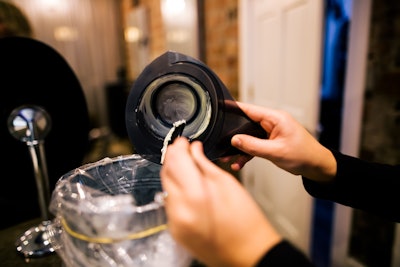 Courtesy of Fringe A Boutique Salon
Courtesy of Fringe A Boutique Salon
“Salons can raise money to move in those directions in one of two ways: implementing a per service surcharge (a “green fee”) or simply raising their prices by the same amount,” she explains. “Which direction you choose depends on what conversation you want to have with your guests and the optics for your business.”
When it comes to communicating the change, both Price and Johnson add that transparency and honesty is key.
“Salons can explain the fee’s purpose—funding recycling initiatives or transitioning to sustainable products—through social media, newsletters or in-salon displays,” Johnson suggests. “Framing the fee as an investment in a greener future and detailing its direct benefits to the environment and the community helps clients understand and support the initiative.”
Price also recommends using marketing to communicate changes and help draw like-minded clients to your salon, which will increase your revenue. He also suggests focusing on the value the client is receiving from developing a sustainable strategy as you develop talking points for communicating the change.
Benefits of Sustainability for Clients
Sustainability offers numerous benefits for both the salon and its clients, which is why the story you choose to communicate to your clients around the shift is so important. By highlighting the advantages, you position yourself and your salon as a leader in sustainability, enhancing your overall reputation.
But, what story should you tell?
Tate shares the most effective communication around the shift to being a sustainable salon are those that the client can see and directly impact their experience. While using sustainable products and tools creates a positive environmental impact, they also can improve your client’s overall wellness and provide them with a holistic beauty experience that is calming, relaxing and luxurious.
“Many salons install ECOHEADS spray nozzles at their shampoo basin as a first move.” Tate shares. “As well as saving water and money, an ECOHEADS on the basin also improves the experience for the client by boosting water pressure and filtering and softening the water, reducing sediment and the impact of minerals and chemicals in the water on the hair and scalp.” 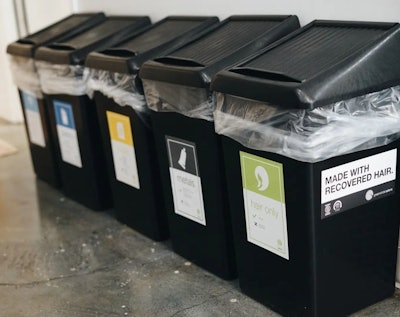 Courtesy of 937 Salon and Spa
Courtesy of 937 Salon and Spa
Price suggests communicating to clients about the environmental impact they will be making by choosing a sustainable salon.
“By choosing your salon, they’re no longer contributing to the 877 pounds of beauty waste that enters our landfills each minute,” he explains.
This can also serve as an opportunity to educate clients on sustainability practices they can implement at home, so they can get involved too. By being a part of the initiative, you are creating a community of like-minded individuals who want to contribute to a cleaner planet.
Valuable Resources for Sustainable Beauty Professionals
For beauty professionals looking to adopt more sustainable practices, resources are available to guide the way.
The Green Beauty Community, in partnership with Pivot Point International, has created a guidebook that offers actionable insights on waste reduction, sustainable product selection, energy and water conservation and client education. The guide is available for free to download on the Green Beauty Community website.
Green Circle Salons simplifies salon waste management and offers an easy way to divert salon waste from landfills and waterways. They also provide training and resources to help salons adopt other sustainable practices.
Sustain Beauty Co provides education, resources and information on how to become a more considerate business that will reduce costs and boost your bottom line. They also source and support sustainable products for beauty pros.
“There is a lot of information on the subject, much of it can be confusing, conflicting, politically charged and downright overwhelming,” Tate shares. “We encourage everyone to follow the three Rs – Read, Reflect and find what Resonates for you. Small changes can make a big difference, and they build lifelong habits and awareness.”
Here are some other resources you can dive into:
- Check out the Environmental Working Group’s “Skin Deep” website as a resource and guide to safer personal care products. Sustainable Beauty Distributors and Manufacturers provide access to products that can help beauty professionals offer eco-friendly services, from haircare and skincare to makeup and styling products.
- Social media and online communities can be great for connecting with other sustainable beauty professionals. Many eco-conscious beauty influencers and groups share tips, tutorials and resources for adopting sustainable practices in salons.
- Books and podcasts are great ways to learn at your own pace and gain new ideas for integrating sustainability into your beauty business.
- Partner with local environmental groups to access community-specific resources and advice.
- Use apps or tools that track and analyze the salon’s energy and water consumption to identify areas for improvement.
- Attend beauty industry conferences or expos with a focus on sustainability to stay updated on new trends and technologies.
For More
Beauty Launchpad Managing Editor Gabby Bach and Hairdustry's Corey Gray chatted with Green Beauty Community Foundation co-founder Hannah Craik (@salonvironment) on the Your Day Off podcast about eco-friendly salon tips and how green beauty is more affordable than people assume.
About the Experts
Daniel Johnson is the Founder and Executive Director of the Green Beauty Community Foundation, which is a vibrant, inclusive 501(c)(3) nonprofit organization dedicated to connecting individuals and brands who share a passion for sustainable beauty.
Shane Price is the Founder and CEO of Green Circle Salons, the industry’s first sustainable salon solution dedicated to fighting beauty waste and climate change.
Valorie Tate is the Founder of Sustain Beauty Co, which helps identify authentic, credible and environmentally responsible brands that put the stylist at the forefront of their purpose.



